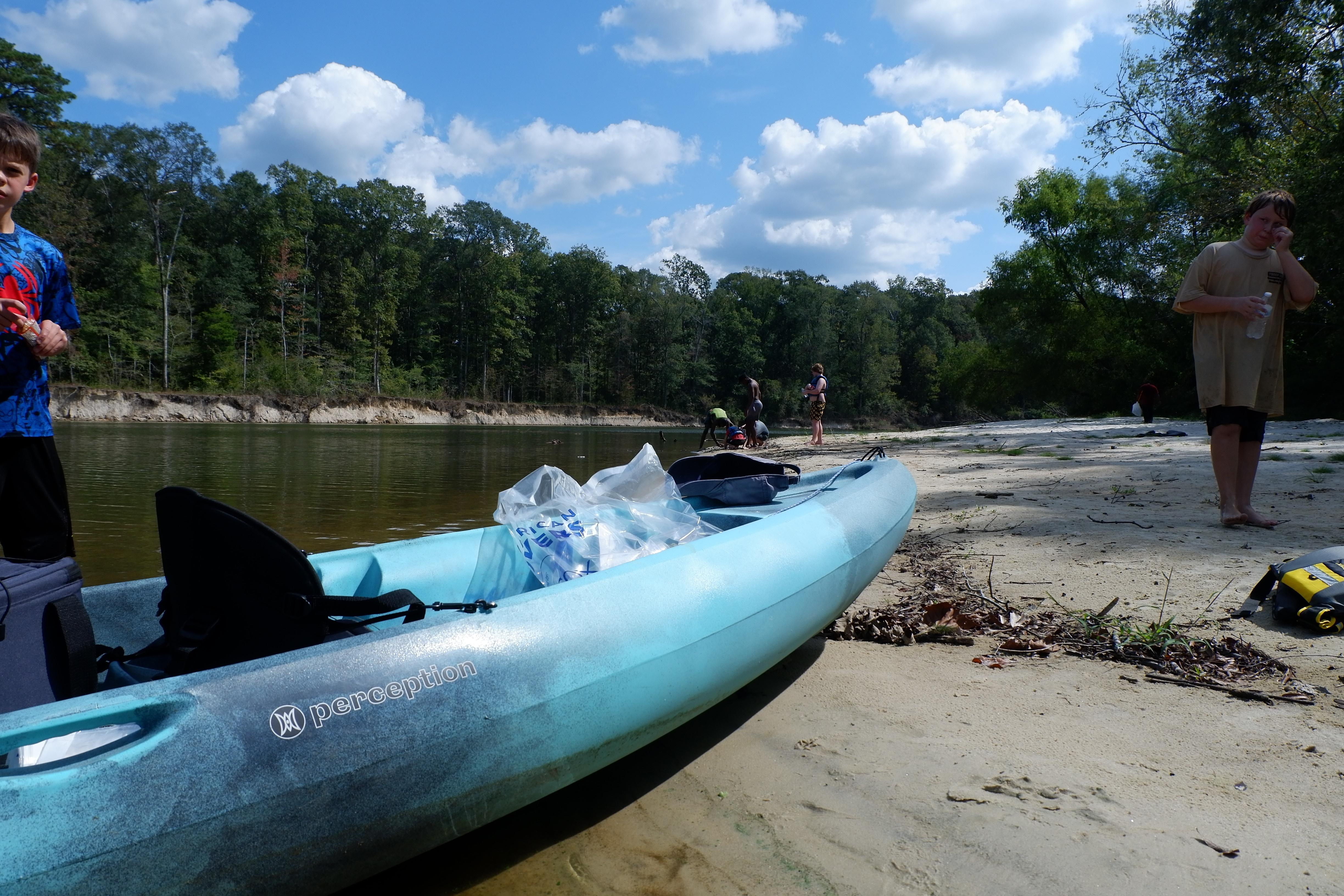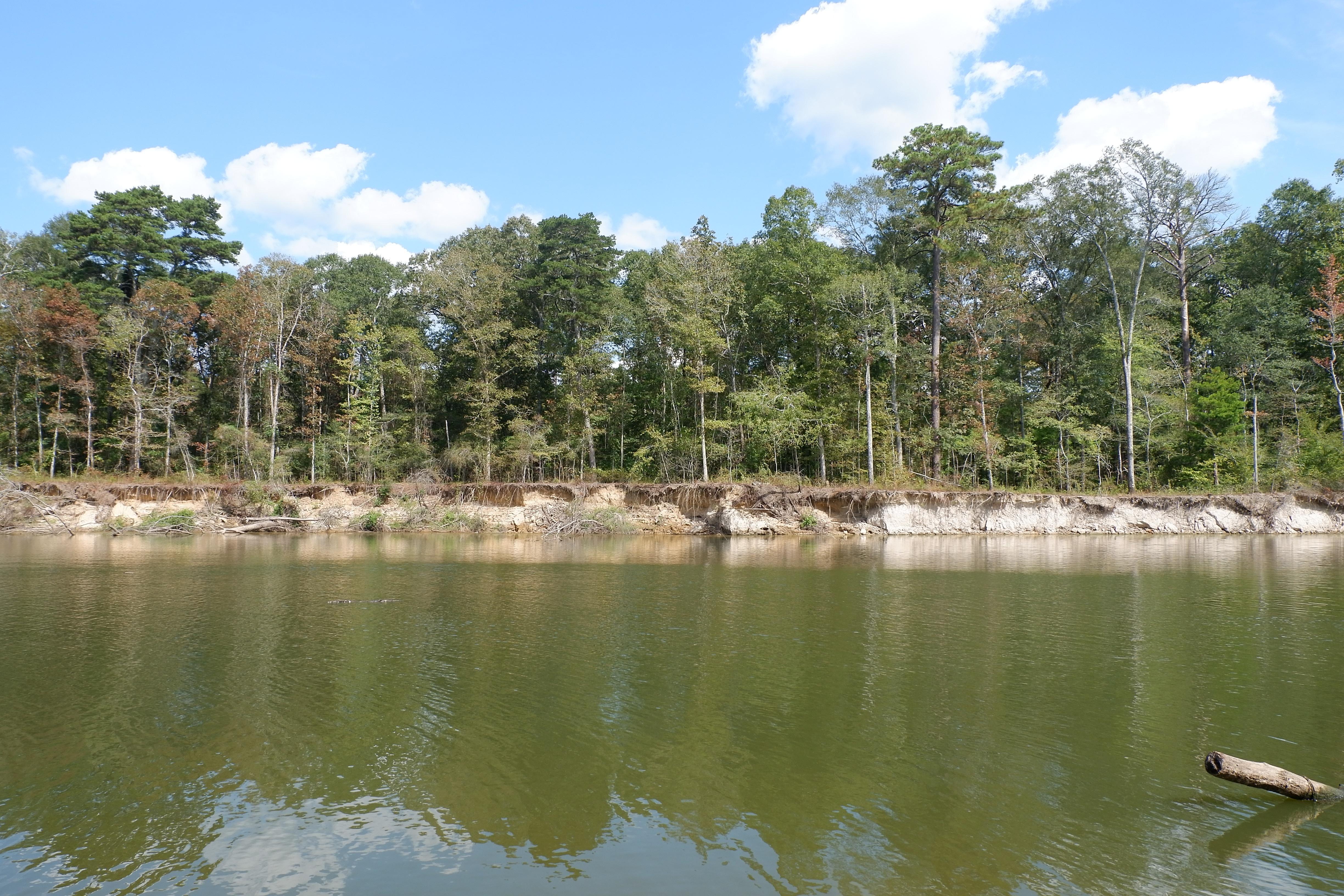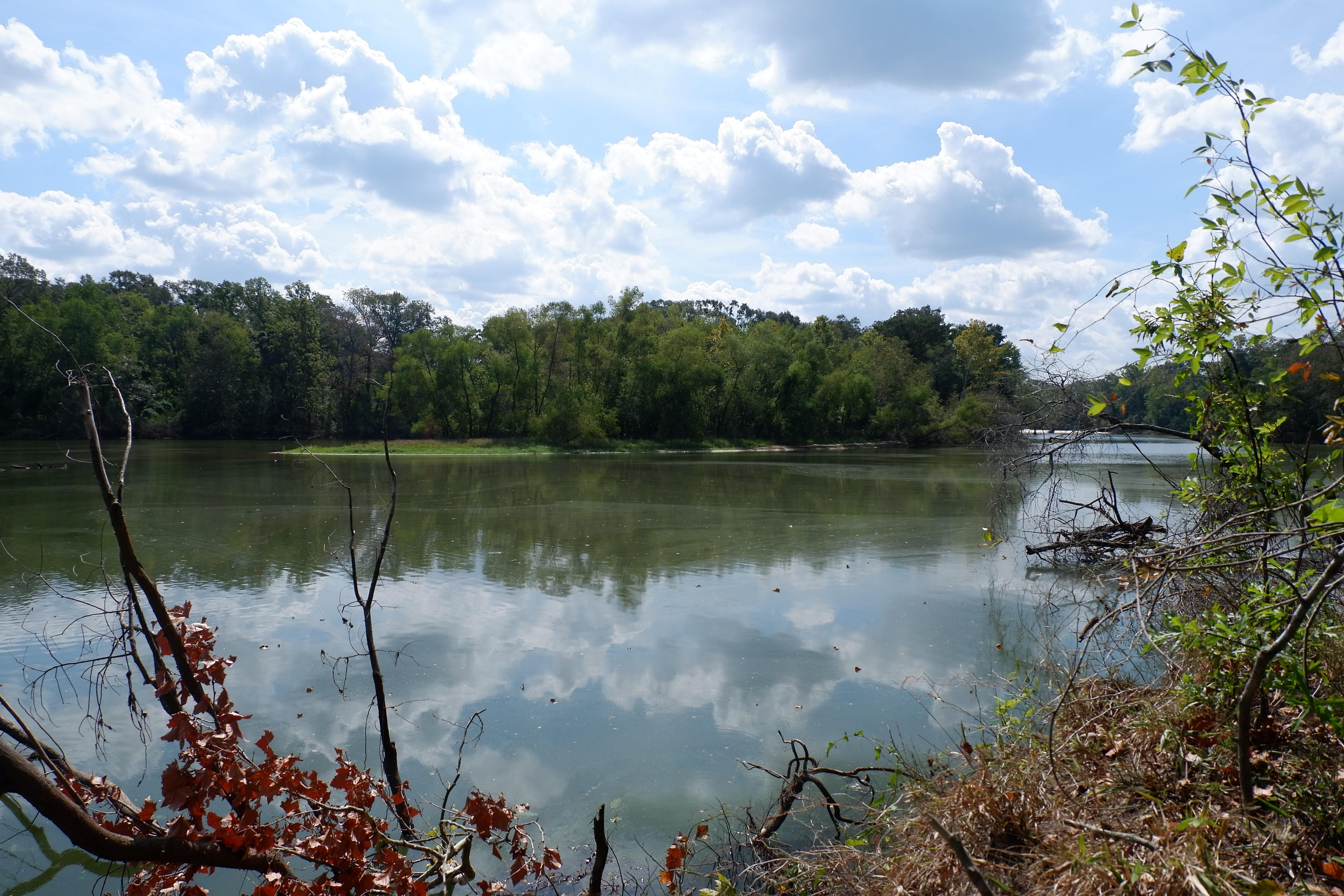Up the still headwaters of the Pearl River, several volunteers are paddling in search of trash scattered along sharply eroded shoreline.
Amid low water levels, 8th annual Pearl River Clean Sweep addresses legacy trash


Up the still headwaters of the Pearl River, several volunteers are paddling in search of trash scattered along sharply eroded shoreline.
Michael McEwen
Pearl River
They make their way upriver amid a months-long drought felt in much of Mississippi. At four and a half feet in depth, the river is low -- more than 4 feet below its average. The volunteers are bracketed on both banks by powdered white sandbars varying in size and alligator traps flagged with orange ribbon, both newly-exposed by the still-falling waterline.
Sloughed banks stand tall across the bend from where Ben Mullen and his wife, Amanda, supply those volunteers with boats. As he unloads the third trailer of kayaks by 9 in the morning, Mullen remarks on how good of a day it is to be on the river – it could easily be 100 degrees plus, as it has been for much of the summer.
The two own and operate Pearl River Kayaks, a Leake County based river outfitter, and have supported the Clean Sweep effort along the Pearl's headwaters all eight years. They're offloading boats for volunteers at the Leake County Water Park, which sits between the Ross Barnett Reservoir to the south and the river's origin, at the sacred Choctaw Nanih Waiya site, to the north.
They’re also one of numerous community members and organizations who have worked alongside the Pearl Riverkeeper, who organizes the annual cleanup, to promote keeping the river healthier.
Expecting to work until dark, Ben Mullen says the yearly decrease in trash is what motivates them to keep coming back.
“It’s gotten progressively better every year, just because we’re doing it and people are more aware of it,” he said. “We promote it all the time. You bring back some trash, we'll give you a discount off your rental for the day. We always try to hand out a trash bag with every rental we do and just encourage it. That first year it was two and a half, three times just from this section of the river. Last year I think it was 700 pounds.”

Volunteers set out across an oxbow lake of flooded cypress brimming with algae, their bright kayaks gliding between tree tops and bumped on occasion by submerged trunks. But shortly after the river opens, and recently exposed sandbars jut out into the river and show the signs -- and trash -- of old campsites; tent poles, spent firewood and discarded blue tarp.
Where small oxbow lakes give way to rooty shoreline, glass bottles and empty cans pull the paddlers across-and-back the river as bluegill and bass leap between them. While a hawk shadows from above, more trash is added to the back of boats by the minute.
With His kayak beached more than half a mile upriver on a wide sandbar, volunteer Dexter is combing the woods for trash with a garbage bag in hand. An avid fisherman from Brandon, he says this is his fourth year paddling the Pearl alongside his son in order to help protect it.
“I got a beer can and I see a couple more cans I'm going to grab over there. And so far, just cans and paper. Last year we found a whole deep freezer and brought it back,” he said. “It's important to keep the environment healthy, keep the animals healthy by trying to get as much trash out as you can. So I think that it's a very important job to try to keep this clean.”
As the crow flies, the Pearl begins 190 miles north of its end at the Mississippi Sound and Gulf of Mexico. But when factoring in its many bends and turns, the Pearl is closer to 490 miles long, stretching through more than a dozen counties, and draining more than 8,000 square miles of water.
This year's Clean Sweep gathered volunteers at 25 locations along the watershed, including the Strong and Bogue Chitto rivers, some of the Pearl's major tributaries. The cleanup at Honey Island Swamp, where the river splits into the East and West Pearl, was conducted by foot due to low water levels and removed 50 car tires, thanks in part to the ongoing drought.
Around 12,000 pounds of trash was removed from that stretch, according to Riverkeeper Abby Braman.
“And the cool thing about the clean up is the volunteers say that every year it's cleaner and there's less to do. Also to see that we are just making a really big difference and a lot of legacy trash that had been on the river for years or for decades is now gone,” said Braman. “And now we're just kind of doing, you know, like you clean up your house every week or every day. And this is part of our yearly maintenance cleanup on the river.”
Historically, trash from highways and the river's many tributaries has collected in greater amounts further downstream. Braman says through this comprehensive cleanup approach, collection totals from the last two years are significantly lower than those previous.
“It's just really, really great to see that the tangible difference that we're making all up and down the watershed. That's one of the cool things about this week too – if you're cleaning up downriver you don't have to get frustrated about all the trash coming from upriver. We're all cleaning up all along the entire watershed. So it should help everybody out. Every every community should be cleaner.”

Back at the Leake County site, locals like the Mullens say the Clean Sweep effort -- even on a less popular stretch of the Pearl -- has served a leading role in reclaiming it from prior neglect.
They also say it's wilder; shaded on both banks by towering pine and set by the afternoon call of a yellow-billed cuckoo, it’s hard to disagree. As multiple generations of volunteers rest on the upriver sandbar with trash piled in their boats, all agree that the best way to love the Pearl is to protect it.